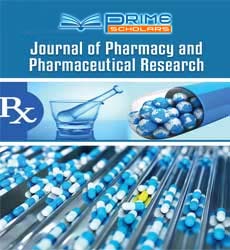Short Communication - (2023) Volume 7, Issue 2
A Short Note on Preparation Methods Involved in Tablet Dosage Form
Steal Moss*
Department of Pharmacy, Aristotle University of Thessaloniki, Greece
*Correspondence:
Steal Moss,
Department of Pharmacy, Aristotle University of Thessaloniki,
Greece,
Email:
Received: 31-May-2023, Manuscript No. IPIPR-23-16998;
Editor assigned: 02-Jun-2023, Pre QC No. IPIPR-23-16998 (PQ);
Reviewed: 16-Jun-2023, QC No. IPIPR-23-16998;
Revised: 21-Jun-2023, Manuscript No. IPIPR-23-16998 (R);
Published:
28-Jun-2023, DOI: 10.21767/ipipr.7.02.020
Introduction
Tablets are one of the most commonly used dosage forms in modern
medicine. They provide a convenient and effective way to administer
medications, offering accurate dosing and ease of handling.
The preparation of tablet formulations requires a series of
carefully orchestrated steps to ensure the accurate delivery of active
pharmaceutical ingredients and the production of high-quality
tablets. In this article, we will explore the essential preparation
methods involved in the manufacturing of tablet dosage forms.
Before tablet production begins, preformulation studies are conducted
to evaluate the physicochemical properties of the API. This
involves analyzing its solubility, stability, particle size, and compatibility
with excipients [1]. These studies provide crucial information
that guides the formulation process and ensures the stability and
efficacy of the final tablet product.
Description
Granulation is a key step in tablet manufacturing that involves the
formation of granules from the API and excipients. There are 2
primary methods of granulation. Wet Granulation-In this method,
the API and excipients are mixed and wetted with a binder solution
to form a damp mass. The mass is then passed through a granulator
to break down aggregates and create granules of a desired size
[2]. Wet granulation enhances powder flow, improves compressibility,
and ensures uniform drug distribution.
Dry Granulation, also known as slugging, involves compacting the
API and excipients into large tablets or slugs. The slugs are then
crushed and screened to obtain granules. This method is preferred
when the API is sensitive to moisture or heat, or when the use of
solvents is not desirable. After granulation, the obtained granules
are blended with additional excipients, including diluents, binders,
lubricants, and disintegrants. The blending process ensures uniform
distribution of the API and excipients, providing consistent
drug content in each tablet [3]. The blended mixture is typically
passed through a sieve to break down any lumps and achieve homogeneity.
Compression is the process of converting the granulated and
blended mixture into tablet form. It involves filling the powder
mixture into a tablet press, which applies high pressure to compact
the material and form tablets of a desired size, shape, and
hardness. Different types of tablet presses, including single punch
and rotary tablet presses, are utilized based on the production
scale and requirements. Throughout the tablet manufacturing
process, rigorous quality control measures are implemented to
ensure the production of safe and effective tablets. Quality control
involves various tests and inspections, such as checking the
weight, thickness, hardness, friability, and disintegration time of
tablets [4]. Dissolution testing is also performed to evaluate the
release of the API from the tablet and assess its bioavailability.
Conclusion
The preparation methods involved in tablet dosage form manufacturing
are a complex and systematic process that requires attention
to detail, adherence to Good Manufacturing Practices (GMP),
and continuous quality control. From granulation to blending,
compression, and coating, each step contributes to the development
of tablets with accurate dosing, optimal drug release, and acceptable
physical characteristics. By employing these preparation
methods, pharmaceutical manufacturers can produce high-quality
tablets that ensure patient compliance, therapeutic efficacy, and
overall safety in medication administration.
Acknowledgement
The author is grateful to the journal editor and the anonymous
reviewers for their helpful comments and suggestions.
Conflict Of Interest
The author declared no potential conflicts of interest for the research,
authorship, and/or publication of this article.
References
- Kitamori N, Makino T (2011) Evaluation of changes in drug particle size during tableting by measurement of dissolution of disintegrated tablets. J Pharm Pharmacol 31(8):501-4.
[Crossref] [Google Scholar] [PubMed]
- Navarro RP (2009) Tablet splitting: Much ado about nothing? J Manag Care Pharm 15(3):272-4.
[Crossref] [Google Scholar] [PubMed]
- Ejeta F (2022) Recent formulation advances and preparation of orally disintegrating tablets. Int J Pharm Compd 26(5):370-377.
[Crossref] [Google Scholar] [PubMed]
- Rowe RC (1985) Gloss measurement on film coated tablets. J Pharm Pharmacol 37(11):761-5.
[Crossref] [Google Scholar] [PubMed]
Citation: Moss S (2023) A Short Note on Preparation Methods Involved in Tablet Dosage Form. J Pharm Pharm Res. 7:020.
Copyright: © 2023 Moss S. This is an open-access article distributed under the terms of the Creative Commons Attribution License, which permits unrestricted use, distribution, and reproduction in any medium, provided the original author and source are credited.

